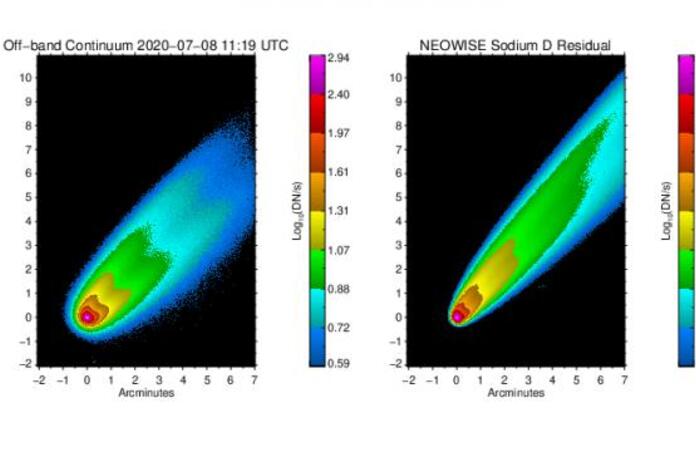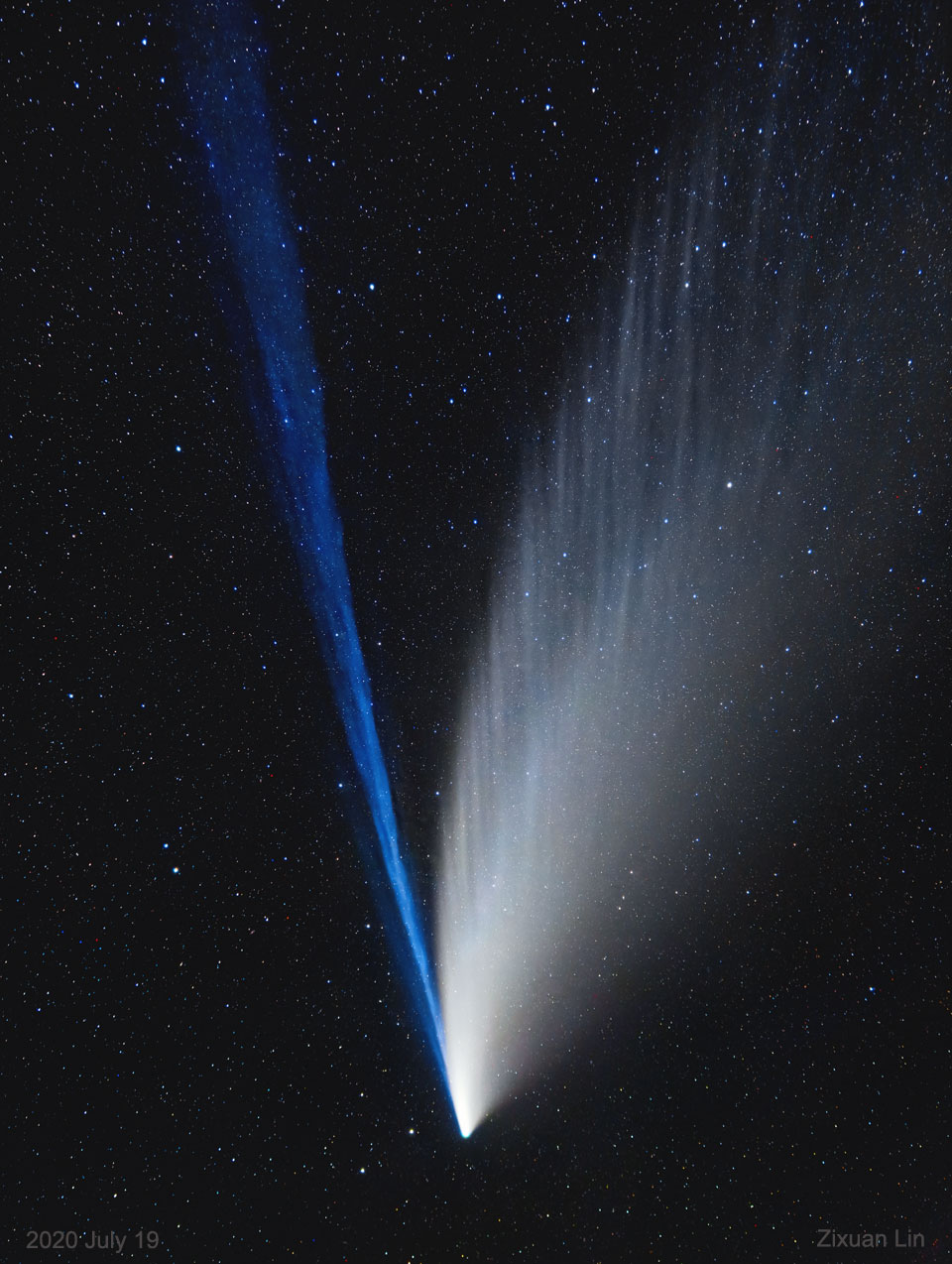Comet NEOWISE’s Hidden Sodium Tail

Using the Planetary Science Institute’s Input/Output facility, astronomers have captured rare images of comet NEOWISE’s hidden sodium tail.
On July 8th, the Senior Scientist at the Planetary Science Institute, Jeffrey Morgenthaler, used PSI's Input/Output facility to capture new images of the popular comet C/2020 F3 NEOWISE. The two images (pictured above), created by Boston University Research Scientist Carl Schmidt, show the comet in two different wavelength bands (colors), which helps isolate the various materials within the comet. The left image shows light reflected off cometary dust (similar to how the comet looks with the naked eye), while the right picture showcases light emitted by sodium atoms.
Comet Tails
The tails of comets are made of plasma (ionized gas), dust, and gas. The tail is the result of the comet's ice turning into a gas, particularly when it passes by the Sun and begins to heat up. As it heats up, dust is pulled away from the surface. When sunlight reflects off the dust, the particles either accelerate and drift away from the Sun, or slow down significantly. These forces acting on the comet effectively determine the shape of its tail. Morgenthaler states that "Atomic sodium responds to sunlight in a similar way to cometary dust, but its momentum kick comes from a very particular wavelength of yellow light – the same color seen in sodium vapor street lamps.”

Comet NEOWISE has two tails, one made of blue-glowing ions emanating from the comet’s nucleus, and the other made of dust particles. You can read the full description of this image here. Image Credit: Zixuan Lin (Beijing Normal U.)
Schmidt adds, “Thanks to acceleration by intense sunlight, the sodium tail takes on a different shape than the tail seen in off-band filtered images, which are dominated by reflected light from dust. In comparison, the sodium tail is narrower, longer and points directly away from the Sun.” While NEOWISE isn’t the first comet to be observed emitting sodium atoms, spotting this particular spectra is difficult due to the Sun’s intense glare. “Sodium tails have only been observed in very bright comets, such as Hale-Bopp and the sungrazer ISON,” said Morgenthaler.
NEOWISE’s Journey
NEOWISE reached its closest approach to Earth, within 100 million kilometers, on July 22nd, and is now on its way back out of the solar system. Both Morgenthaler and Schmidt intend to continue monitoring the comet for as long as possible, to further understand its characteristics. According to the official press release from PSI, they are currently using Monte-Carlo computer models to simulate NEOWISE's sodium tail to study the outgassing rates and speeds.